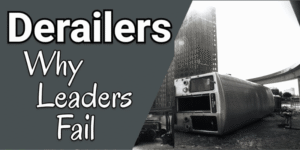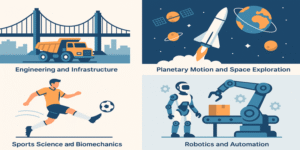Organisational structure is a fundamental element of organisational behaviour (OB), influencing how people work, interact, and perform within organisations. It represents both the formal and informal frameworks that govern the coordination of activities, communication, authority, and decision-making processes. An effective organisational structure ensures that tasks are appropriately distributed, responsibilities are clearly defined, and resources are optimally utilised to achieve organisational objectives (Robbins & Judge, 2021). Moreover, the structure directly impacts employee motivation, performance, and satisfaction, while also shaping the organisation’s ability to innovate and adapt to environmental change (Daft, 2015).
Formal and Informal Structures
The formal structure refers to the official arrangement of roles, responsibilities, and authority in an organisation. This is typically represented through organisational charts and job descriptions, which clarify reporting lines and accountability (Daft, 2015). A clear formal structure facilitates efficiency by reducing ambiguity, ensuring accountability, and providing employees with a roadmap of authority and responsibility (Jones, 2013). Formalisation is especially vital in large organisations where complex coordination is required.
Conversely, the informal structure emerges from social interactions, friendships, and shared norms that develop organically among employees. Informal networks often cut across hierarchical boundaries, enabling faster communication and creating an environment where employees can exchange knowledge and provide mutual support (Shagerdi, 2025). These networks can improve innovation, as employees feel more comfortable sharing ideas outside rigid formal channels (Mintzberg, 1979). However, informal structures may also create subcultures or resistance to change if misaligned with organisational goals.
Hierarchy and Communication Channels
Hierarchy establishes the chain of command within an organisation, clarifying who makes decisions and who executes them. A tall hierarchy provides close supervision and clear accountability but risks bureaucratic delays and reduced employee autonomy. In contrast, a flat structure promotes empowerment and faster decision-making but may create confusion about authority (Pearce & Robinson, 2011).
Equally important are communication channels, which may be vertical (flowing up and down between superiors and subordinates) or horizontal (between peers at the same level). Vertical communication ensures control and direction, while horizontal communication promotes collaboration and problem-solving (Robbins & Judge, 2021). Effective communication systems reduce misunderstandings, promote coordination, and foster a culture of trust. Research shows that open communication climates positively affect both employee satisfaction and organisational performance (Hu et al., 2025).
Decision-Making Processes
The degree of centralisation in decision-making is a key characteristic of organisational structure. Centralised structures concentrate authority at the top, ensuring consistency and control but potentially limiting responsiveness. Conversely, decentralised structures distribute authority closer to the operational level, encouraging innovation, flexibility, and faster responses to challenges (Gulati, Mayo & Nohria, 2016).
For example, start-ups often adopt decentralised structures to harness creativity and employee initiative, while large corporations may rely on centralised structures to maintain stability and risk management (Callari & Puppione, 2025). The effectiveness of decision-making structures often depends on industry dynamics, organisational size, and strategic goals.
Impact on Employee Behaviour, Motivation, and Performance
Organisational structure significantly shapes employee behaviour, motivation, and performance. A well-designed structure ensures alignment between individual roles and organisational objectives, thereby enhancing efficiency and reducing conflict (Robbins & Judge, 2021). When employees have clarity regarding their responsibilities and career progression, motivation and engagement increase.
A flat organisational structure, for instance, promotes autonomy and empowerment, allowing employees to feel a sense of ownership over their work. This fosters job satisfaction and encourages employees to go beyond prescribed roles, boosting both innovation and performance (Pearce & Robinson, 2011). However, poorly structured organisations can create ambiguity, role conflict, and frustration, leading to reduced morale and turnover (Wickramasinghe & Balasooriya, 2025).
Moreover, informal structures are particularly influential in shaping employee behaviour. Strong social networks improve trust, knowledge sharing, and team cohesion, thereby promoting higher levels of engagement and innovation (Dewi & Alviani, 2025). Informal mentoring relationships also provide career support, increasing employee satisfaction and commitment to the organisation.
Organisational Structure and Innovation
The design of organisational structures is critical for fostering innovation. Highly centralised and rigid structures may discourage experimentation, as employees have limited autonomy and fear punishment for mistakes. In contrast, flexible structures encourage creative problem-solving and enable faster implementation of new ideas (Sikalumbi & Abudetse, 2025).
Cross-functional teams and network-based structures enhance innovation by integrating diverse perspectives and knowledge across departments (Albeshchenko et al., 2025). Research further suggests that a culture of collaboration, supported by flexible structures, enhances both innovation outputs and employee well-being (Torres, 2025).
Organisational Structure and Employee Satisfaction
Employee satisfaction is closely tied to how well organisational structures support employee needs for clarity, recognition, and growth. Structures that promote career development opportunities, participation in decision-making, and recognition of contributions enhance job satisfaction (Wickramasinghe & Balasooriya, 2025). Conversely, overly hierarchical structures may alienate employees, reducing motivation and increasing turnover.
Studies show that employees in collaborative structures experience higher levels of satisfaction, as they feel valued for their contributions and enjoy a stronger sense of belonging (Cumar et al., 2025). In digital workplaces, flatter and more adaptive structures have been linked with greater engagement, creativity, and resilience (Dash et al., 2025).
In summary, organisational structure is not merely an administrative arrangement but a critical determinant of efficiency, innovation, and employee satisfaction. Both formal and informal structures shape how employees interact, communicate, and make decisions. While hierarchy provides clarity and control, flexibility and decentralisation enhance responsiveness and creativity. Importantly, structures that balance efficiency with autonomy are most effective in motivating employees and fostering innovation.
As workplaces become more dynamic, organisations must continually adapt their structures to ensure they align with strategic objectives and employee expectations. By carefully designing and managing organisational structures, leaders can create environments that enhance performance, stimulate innovation, and promote employee well-being.
References
Albeshchenko, O., Klochan, V. & Veits, A. (2025) Strategic imperatives of managing the development of tourism and hotel business in territorial communities of the southern region of Ukraine. International Scientific Journal of Management, Economics and Finance, 5(2), pp. 77–95.
Callari, T.C. & Puppione, L. (2025) ‘Meaningful work as shaped by employee work practices in human-AI collaborative environments’, European Journal of Innovation Management. [Online]. Available at: https://www.emerald.com/ejim/article/doi/10.1108/EJIM-11-2024-1339/1275327.
Cumar, M., Kidaneb, B.Z., Negassa, D. & Dinsa, F. (2025) ‘Organisational Culture and Academic Staff Satisfaction in Somaliland Higher Education: Evidence from Structural Equation Modelling’, Frontiers in Education. [Online]. Available at: https://www.frontiersin.org/journals/education/articles/10.3389/feduc.2025.1635607.
Daft, R.L. (2015) Organization Theory and Design. Cengage Learning.
Dash, M., Riyat, S. & Rao, B.U. (2025) ‘Integration of AI Technologies and Knowledge Management Enhances Business Process Efficiency and Competitive Advantage’, Management Journal, 12(3), pp. 55–72.
Dewi, P. & Alviani, D. (2025) ‘From opportunities to innovation: How HR practices, engagement, personality, and autonomy drive creative performance’, Asian Management and Business Review, 5(1), pp. 33–49.
Gulati, R., Mayo, A.J. & Nohria, N. (2016) Management. Cengage Learning.
Hu, H.H., Lai, P.C., Sann, R. & Chen, C.T. (2025) ‘What motivates innovative behaviour among Generation Z workforce?’, Journal of Hospitality and Tourism Insights.
Jones, G.R. (2013) Organizational Theory, Design, and Change. Pearson Education.
Mintzberg, H. (1979) The Structuring of Organizations. Prentice Hall.
Pearce, J.A. & Robinson, R.B. (2011) Strategic Management: Formulation, Implementation, and Control. McGraw-Hill Education.
Robbins, S.P. & Judge, T.A. (2021) Organizational Behavior. Pearson Education.
Shagerdi, A.G. (2025) ‘Social Business and Intra-Organisational Innovations’, Journal of Management Studies, 14(2), pp. 88–106.
Sikalumbi, D.A. & Abudetse, R.K. (2025) ‘Leadership Styles and Open Innovation in Higher Education’, Journal of Education and Practice, 9(5), pp. 15–30.
Wickramasinghe, V. & Balasooriya, U. (2025) ‘Working on projects: Career satisfaction of employees stationed on-site at clients’ facilities for project delivery’, Management Science Letters, 15(2), pp. 211–225.









